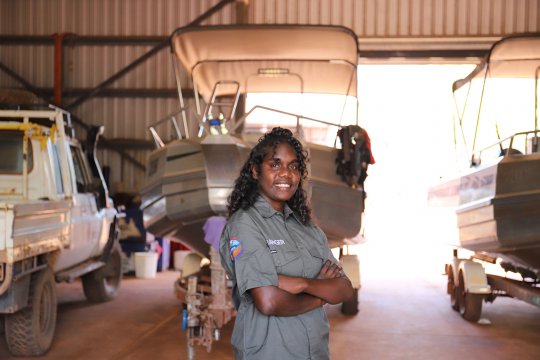Risk Oversight and Management
In a rapidly evolving landscape of emerging risks we continue to face a number of challenges to deliver on our purpose. Through our commitment to achieving and maintaining strong risk management processes, we can address these challenges and practice evidence-based decision making. Risk monitoring and reporting capabilities are being enhanced to ensure we can track progress and demonstrate continuous improvement across all areas of risk oversight and management. We are focused on continuing to enhance staff capability to proactively manage all risks and seek to ensure staff at all levels identify and manage risks and feel comfortable to escalate risks when appropriate.
The NIAA has established internal controls and governance arrangements that support the management of risk across the Agency. The NIAA’s Audit and Risk Committee and Internal Audit functions are designed to strengthen our systems and processes to ensure we can withstand current and unforeseen pressures and risks, while monitoring control effectiveness and performance. A great example is our risk management approach to the COVID-19 pandemic. Specific committees and enterprise-wide processes exist within our governance structure to manage particular categories of risk.
In 2021–22 we continue to implement our Risk Management Policy and Risk Management Framework with a focus on building capability through a training and awareness program that helps staff further engage with risk. Over the next four years, we will continue to integrate, strengthen and embed our risk management framework in order to deliver on our purpose. Maintaining strong relationships, increasing transparency and identifying trends and opportunities to better support us to collaborate with stakeholders to manage risk.
Enterprise Risks 2021–22
| Category |
Enterprise Risks |
Mitigation |
| People and Capability |
- The NIAA is not able to maintain the right capabilities (people, resources, processes, systems and culture) to deliver government objectives.
- The NIAA’s investment in and management of its people may not meet short and long-term requirements to achieve its purpose.
|
- Develop an NIAA Workforce Plan and Human Resource Management Model, with a focus on leadership and development, performance management, and our action plan for the Commonwealth Aboriginal and Torres Strait Islander Workforce Strategy.
- Continue to implement the Risk Management Framework to embed a strong risk management culture.
- Consider broader implementation of the APS Mental Health Capability Framework tailored to the NIAA.
- Continue to evolve HR processes to ensure that staff confidently raise claims of misconduct or discrimination, and that any complaint is dealt with appropriately. Ensure any trends which are identified are addressed at a local or agency level.
- Implement the NIAA’s Digital Strategy, Data and Information Management Strategy and ICT strategy, focussing on a tailored capability uplift program.
- Invest in a tailored capability uplift program for staff as per the three new strategies — digital, data/information and ICT.
|
| Relationships and Influence |
- The NIAA is not able to maintain credibility with key stakeholders and partners and is unable to collaborate and influence outcomes in support of the organisation’s purpose.
- Aboriginal and Torres Strait Islander peoples do not continue to see the NIAA as trusted or reliable.
|
- A credible regional presence which is connected to and engaged with communities, service providers and state and territory governments.
- We invest in a systematic external stakeholder engagement approach at all levels of the NIAA.
- We demonstrate the shared benefit of collaboration through a partnership approach.
|
| Culture |
- The NIAA’s organisational culture may not continue to work towards the unifying power of a One Team approach and leads to limited cohesion and alignment to the NIAA’s purpose.
|
- Further develop the Footprints Cultural Learning Program to enhance cross-cultural capabilities.
- Embed a positive risk culture at the NIAA through further education about risk and training staff to apply the risk management framework.
- Develop and implement an Internal Communications Strategy to increase information sharing and support One-Team.
- Drive a culture of high performance and accountability through the development of the Organisational Performance Framework, including implementing the Group Performance Review process.
- Implement mechanisms to support and monitor culture through ongoing performance reviews.
|
| Delivery |
- The NIAA’s administrative processes may impact effective and timely delivery of programs and services.
- The NIAA’s future sponsored programs are not grounded in evidence and the lived experience of Indigenous communities.
|
- Implement the Agency’s Policy Investment Framework and Performance Monitoring and Evaluation Framework, to better target our investment to the areas of greatest need and to enhance how we measure performance.
- Develop a ‘digital first’ approach for enhanced use of information and improved evidence base. This will also improve the internal sharing of information and ability to detect and respond to further performance and compliance issues.
- Implement the Agency’s Integrated Compliance and Fraud Framework further improve our proactive approach to compliance, including prevention, early engagement and response.
|

